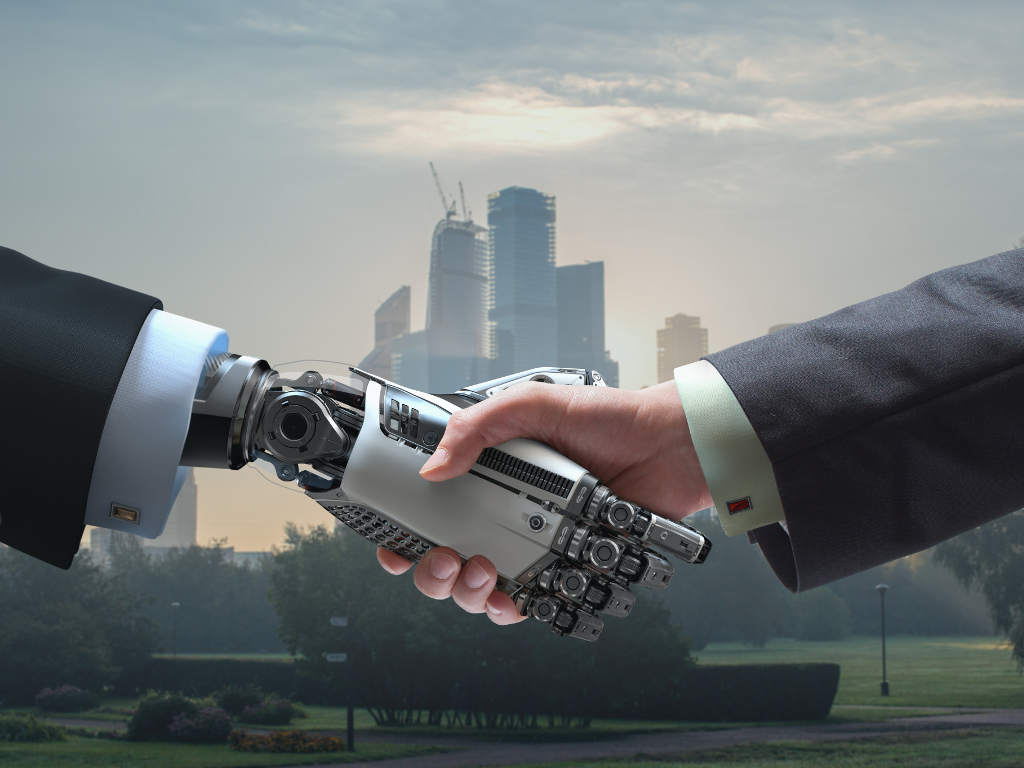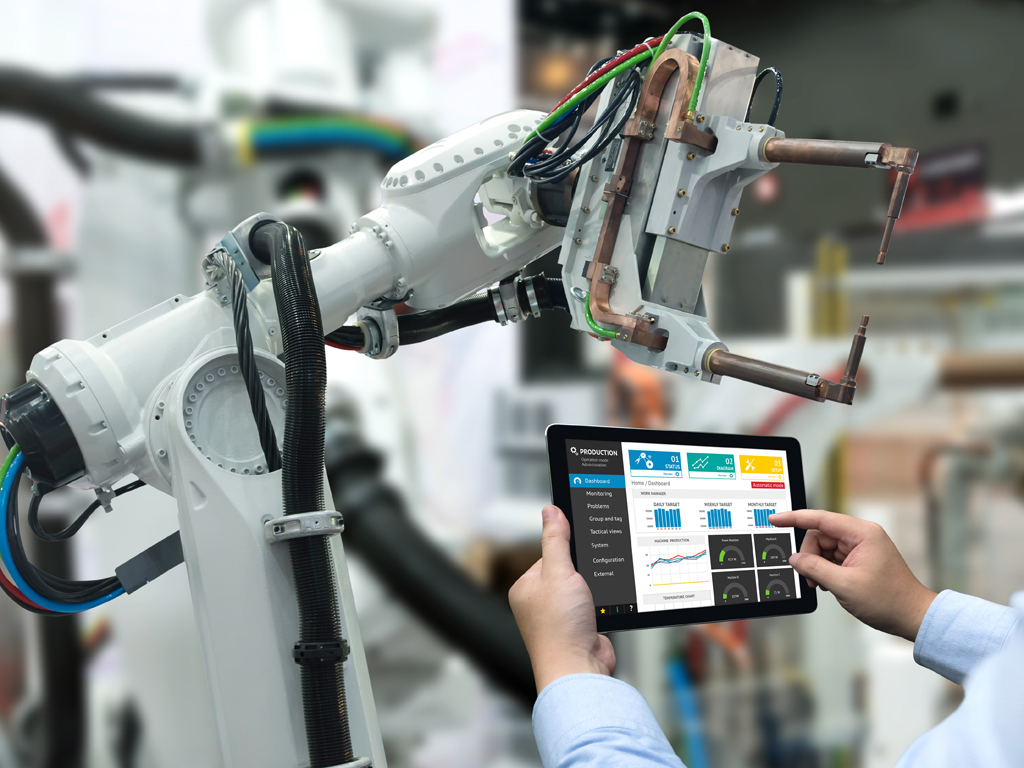Serbian economy in need of robots – Automation better solution than cheap workforce
Source: eKapija
 Thursday, 09.08.2018.
Thursday, 09.08.2018.
 15:57
15:57
 Thursday, 09.08.2018.
Thursday, 09.08.2018.
 15:57
15:57
(Photo: Willyam Bradberry/shutterstock.com)

Globally, wherever robots are present in larger numbers, it has been speculated for a long time about potential disadvantages of their arrival to people. Robotics in Serbia have a long history. It was back in 1968 that academy member Miomir Vukobratovic, one of the pioneers of world robotics, founded the Robotics Laboratory at the Mihajlo Pupin Institute. However, the local industry has not recovered from the economic sanctions of the 1990s to this day.
There are no precise data, but the estimate is that there are only 300-400 installed units in Serbia. At the moment, in the country, robots are primarily used in production, for the packaging and the palletization of products, facility inspection, quality control, as well as for welding mechanical structures in the car industry.
As the research associate and the manager of the Center for Robotics, Aleksandar Rodic, says in his interview with eKapija, although robots are indispensable in those fields, they are also the most cost-effective to investors.
On the other hand, he further explains, there are serious barriers slowing down investments in robotics, with the main reasons being that Serbia has cheap workforce and that it is imperative for workers not to be laid off when private companies change ownership, which means that investors are neither bound nor motivated to implement top technologies in the Serbian industry.
– To employers, it is cheaper for employers to hire two manual workers than to buy a robot and install it at the production facility. Robotization increases productivity and product quality, and companies looking to sell their products in an international market need to follow top technologies – Rodic explains.
Petar B. Petrovic, a professor at the Faculty of Mechanical Engineering in Belgrade, agrees with this. He believes that robots will replace people wherever possible. As he says, the model which combines people and robots, that is, the kind of automation present in Europe, is much better than the Serbian model of low-paid workers.
According to him, non-industrial use of robots is mandatory as well – the Internet of Things technology, where the robot is the most important entity, is a good example.
– Robots take many forms – software, artificial cow milking system, which changes the technology of cattle farming, an army of smart devices with cognitive properties. There's also the advancing, unstoppable ICRT (Information Communication Robotics Technologies) – Petrovic says for eKapija.
(Photo: Zapp2Photo/shutterstock.com)

Our interviewees agree that robots will not take anyone's job, but reshape it. The labor market will thereby change drastically. New professions will appear and the number of workers relying more on the ICRTS will increase.
– It is to be expected that robots will replace people on difficult, hazardous, as well as boring and monotonous, jobs, but the increasing inclusion of robots in the industry and social activities will create good new jobs such as robot mechanics, robot device programmers, system integrators, ergonomics professionals and similar professions – Rodic says and adds that robots can also be useful assistants in journalism, the court system or diplomacy.
Professor Petrovic adds that the scenario will be similar to the appearance of computers and the internet.
– Typing jobs have disappeared, as well as traditional post office and library jobs, but on the other hand, the demand for new jobs that didn't exist before has exploded, and even for a new business – Petrovic explained and added that only those able to adapt can cope with this process.
Customs duties on robots
In order for robotization to develop, state aid is needed, and the fact that there are customs duties on robots is certainly not an advantage.
Petrovic believes that the development of robotization would be helped greatly by subsidies, whereby each production SME would be exempt from tax payment.
– A state which plans its own industrial development systemically needs to be brave and subsidize 50% of the costs of each production SME which buys a new robot and integrates it in the production process. The SME would thereby upgrade its technological system, quality and productivity, while also employing new workers – Petrovic says.
The usage of robots is inevitable in any economy which wants to facilitate operations and get products of higher quality. Still, robots can't work alone, so people still need to be hired. The inclusion of robots steps up the production and, consequently, revenues, creating conditions for the new, better-paid jobs. Some adjustment is needed, but as the development of robotization in Serbia is still modest, there's no reason to fear the “surge of smart machines” just yet.
Companies:
 Institut Mihajlo Pupin doo Beograd
Institut Mihajlo Pupin doo Beograd
Tags:
Aleksandar Rodic
Petar B Petrovic
Center for Robotics
robots in Serbia
use of robots in Serbia
robotization in Serbia
Mihajlo Pupin
Mihajlo Pupin Institute
ICRT
Information Communication Robotics Technologies
Internet of Things technology
customs duties on robots
replacing people with robots
robots in the economy
robots in medicine
robots in construction
robots in journalism
robots in the court system
industrial application of robots
non-industrial application of robots
automation in Serbia
automation
robot
robots
robotizations
Comments
Your comment
Most Important News
Full information is available only to commercial users-subscribers and it is necessary to log in.
Follow the news, tenders, grants, legal regulations and reports on our portal.
Registracija na eKapiji vam omogućava pristup potpunim informacijama i dnevnom biltenu
Naš dnevni ekonomski bilten će stizati na vašu mejl adresu krajem svakog radnog dana. Bilteni su personalizovani prema interesovanjima svakog korisnika zasebno,
uz konsultacije sa našim ekspertima.


 Izdanje Srbija
Izdanje Srbija Serbische Ausgabe
Serbische Ausgabe Izdanje BiH
Izdanje BiH Izdanje Crna Gora
Izdanje Crna Gora


 News
News






